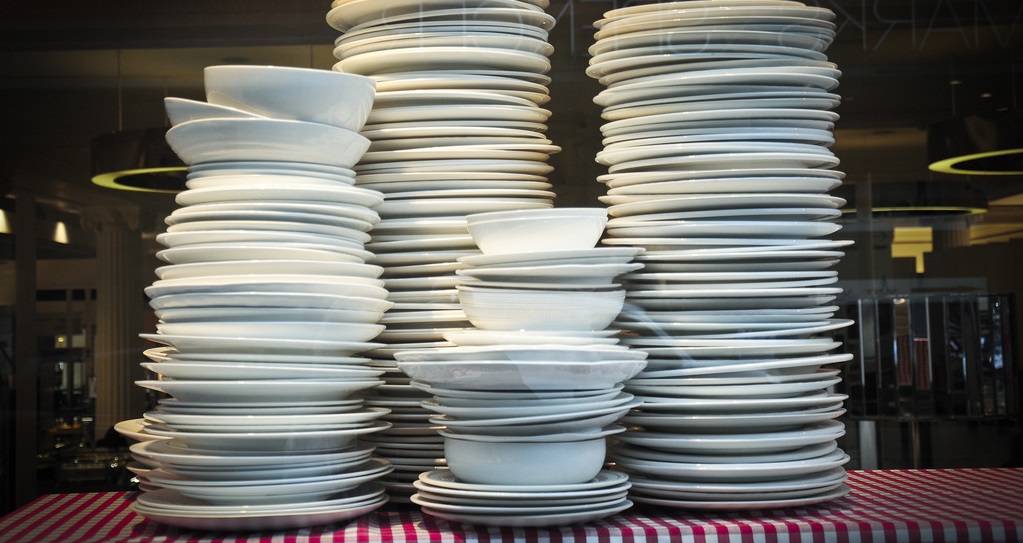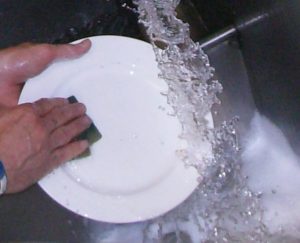
At the onset of one of the busiest times of year, professional kitchens are under immense pressure in every sense. Tackling extra stock in the kitchen combined with extra tables to be served, all whilst fulfilling the high expectations of guests are just some of the challenges without even starting on the quantity of extra dishes and cookware that need washing.
Menus will be packed with traditional fare including pigs in blankets, a good selection of meats, roast potatoes and roasted vegetables; Christmas wouldn’t be the same without them. Unfortunately, the side effects of these festive favourites is an increased production of fats, oils and grease (or FOG).
Grease Management at Christmas
Kitchens should be employing good standards of grease management throughout the year. This includes scraping foods into the bin, dry wiping plates and cookware and swilling in sinks, underneath which appropriate grease traps are fitted according to guidelines. But what about other FOG residue that could potentially worm its way into the sewer system from unexpected sources that haven’t been accounted for?
Bearing in mind the increased quantities of FOG during this time of year, Christmas is the 
If operating a commercial pot wash section and warewash as intended there should be little need to install a specific trap solely for this equipment. The correct procedure involves the scraping of food waste into the bin, dry wiping of plates and cookware to remove excess fats, oils and grease before spraying in the pre-wash sink. Any residual FOG left after scraping and wiping will go down the sink to be collected by the grease trap there. Tableware should effectively be ‘clean’ and free of FOG or other contaminants before going into the dishwasher; the dishwasher only used to sanitise crockery, cookware and cutlery.
Having said that, every area of the kitchen should be viewed as potentially susceptible to FOG production from combination ovens to ware washers. Staff in pot wash areas, even those with the strictest measures in place, could be tempted to cut corners during a busy Christmas service where high turnover demands a continuous influx of clean crockery. Any lapse in concentration could see FOG that would otherwise be taken care of and disposed of correctly, entering the dishwasher and therefore the sewer. Not only could this have a negative impact on the operation of the dishwasher but it also spells bad news for the drainage system, especially when there is no defence in place against this direction of attack.
Although grease traps are typically associated with under sink positioning or in external locations (as is the case for high capacity businesses), can they also be used in other situations?
Grease Traps and Dishwashers
The big question most kitchens ask is ‘can grease traps be fitted to commercial dishwashers’? Unfortunately, it’s not that straight forward hence there are conflicting opinions and advice surrounding this topic.
In theory, there is no reason why a trap or separator can’t be fitted to a dishwasher, as long as it is of suitable capacity to cope with the large flow rate. The overall effectiveness of the system however is the issue that causes debate. Ultimately how well the interceptor performs is determined by the final position and situation of the unit in relation to the warewasher.
What’s the Problem?
The main issue is that the high water temperature ejected from the dishwasher mixed with detergent could hinder the successful operation of the FOG management system. 
Dishwashing detergents are designed to break down grease and therefore could potentially begin breaking down FOG in the interceptor. High temperatures could heat solidified FOG, returning it to a fluid that can travel farther into the sewer. This doesn’t prevent possible fatberg production, just passes the problem further down the line where it will again solidify and cause blockages. If a trap isn’t ‘trapping’ then it’s effectively redundant.
These points, whilst viable don’t mean that grease containment solutions can’t be effective when working in conjunction with a dishwasher. Correct positioning however, is vital.
Placement is Key
A grease trap should never be installed too close to a dishwasher. The high flow rate and hot temperatures can prevent the effective separation of FOG, potentially forcing any fats, oils and grease already contained straight through to the sewer. The sheer volume of water flushed through the system could result in the bypassing of preventative measures completely, rendering them ineffective.
The water expelled from a dishwasher generally sits between 50°C and 80°C. At these temperatures the FOG present in effluent will remain fluid, any fat already stored in the box potentially melting. Passive and mechanical systems rely on the cooling and solidification process to successfully capture FOG; difficult to achieve when combined with high temperatures.

In order for an interceptor to be effective fats need to be contained for long enough at the right temperature for them to solidify. Grease management systems should therefore be positioned with enough distance between the dishwasher and the trap to allow water to sufficiently cool to regular effluent temperatures before entering the interceptor.
What Size Do I Need?
Some operations may opt to install multiple smaller traps around the kitchen to serve individual equipment. Alternatively, a large single unit could be installed to service the kitchen as a whole. Fittings and appliances will often all be connected to a main drain; all waste directed to the same outlet before entering the public sewer system. In some circumstances, this could be the perfect position for a trap to catch debris from a commercial dishwasher. It’s far enough away from warewashing systems to allow for water to have cooled and it will encompass all kitchen equipment, meeting all FOG containment requirements. If opting for this set-up it’s vital that the system installed is large enough to accommodate effluent from the entire kitchen and meet the combined flow rate of the business as a whole.
Top Tip: It’s imperative to install a trap capable of dealing with the connected flow rate. A site survey is strongly recommended to assess individual needs and ascertain the right solution for each individual kitchen.
We Recommend
One product on the market that can withstand potential high temperature effluent is the Goslyn GOS20 grease recovery unit. This is a non-mechanical GRU that doesn’t require FOG to solidify to operate effectively. The Goslyn automatic grease trap instead employs its own heater to maintain the fluid state of fats, oils and grease before utilising hydro-static pressure to force FOG out and into a separate container. It is this difference in operation from standard traps that make it ideal for use in conjunction with a commercial dishwasher. Larger sizes are available for kitchen that require higher capacity GRU's.
The legislation states that any effluent leaving a commercial kitchen that could potentially contain FOG must pass through a grease trap. Technically all dishwashers should be connected somewhere along the line according to guidelines however it is the placement of this grease interceptor and how it is set-up that determines its effectiveness.


